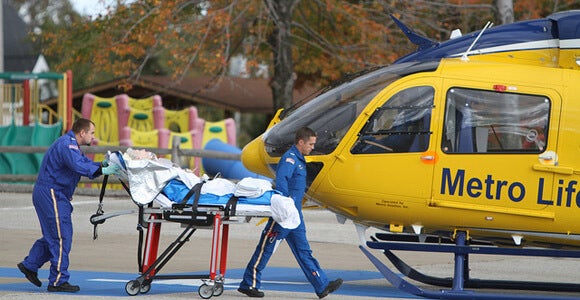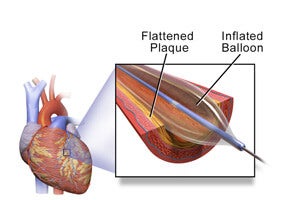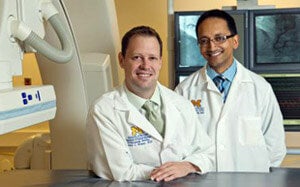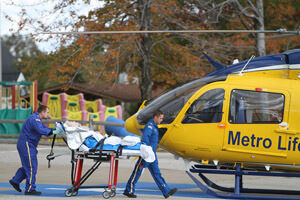
Heart disease is the most common cause of death in the world, accounting single-handedly for one in eight deaths. It has proved a difficult incumbent to unseat, and a new study just published in the New England Journal of Medicine shows just how difficult.
 Nearly everyone wheeled into an U.S. emergency room bay while suffering a heart attack will be treated with angioplasty, or the insertion of a small balloon into vessels near the heart to allow blood to flow around blockages. Research indicates that each moment blood flow is disrupted increases damage done to the heart, so hospitals have made herculean efforts to reduce how long it takes for patients to receive angioplasty.
Nearly everyone wheeled into an U.S. emergency room bay while suffering a heart attack will be treated with angioplasty, or the insertion of a small balloon into vessels near the heart to allow blood to flow around blockages. Research indicates that each moment blood flow is disrupted increases damage done to the heart, so hospitals have made herculean efforts to reduce how long it takes for patients to receive angioplasty.
This “door-to-balloon” time is considered so important that the statistic helps set each hospital’s quality of care score.
But it turns out that faster treatment times have not budged the mortality rates among patients who present with heart attacks, according to a study conducted by Hitinder Gurm and Daniel Menees of the University of Michigan Medical Center based on data shared by 515 U.S. hospitals.
“Door-to-balloon time” at the hospitals fell from 83 minutes in 2005-2006 to just 67 minutes in 2008-2009, the researchers found. But the share of heart attack patients who died hardly budged from 4.8 percent in 2005 to 4.7 percent in 2009.
The researchers point to a time period as critical as door-to-balloon time: we could call it symptom-to-911 time.
 “Heart muscle is dying while a patient is thinking, ‘Is this real? Should I call, or should I not call for help? “We’re seeing a fair amount of delay in seeking treatment. That has been harder to fix,’” said author and internal medicine professor Hitinder Gurm.
“Heart muscle is dying while a patient is thinking, ‘Is this real? Should I call, or should I not call for help? “We’re seeing a fair amount of delay in seeking treatment. That has been harder to fix,’” said author and internal medicine professor Hitinder Gurm.
However hard, hospitals and public health officials will have to find ways to whittle away at that time, Gurm and Mendees said.
“Potential strategies to improve care may include increasing patient awareness of heart attack symptoms, reducing delays for treatment once symptoms begin, and shortening transfer time between health care facilities once a heart attack is recognized,” said Menees, an interventional cardiologist.
Perhaps a million-participant heart study that UCSF researchers are conducting via smartphone, giving them access to people’s health choices outside the doctor’s office, will offer some insights.
Images: Dana Beveridge via Flickr, Blausen Medical Communications via Wikimedia Commons, Menees and Gurm courtesy University of Michigan Medical Center



